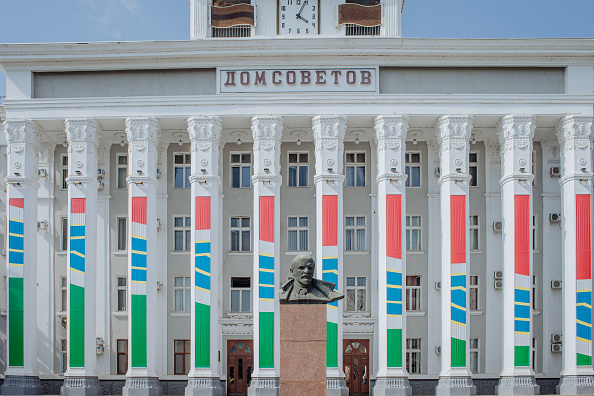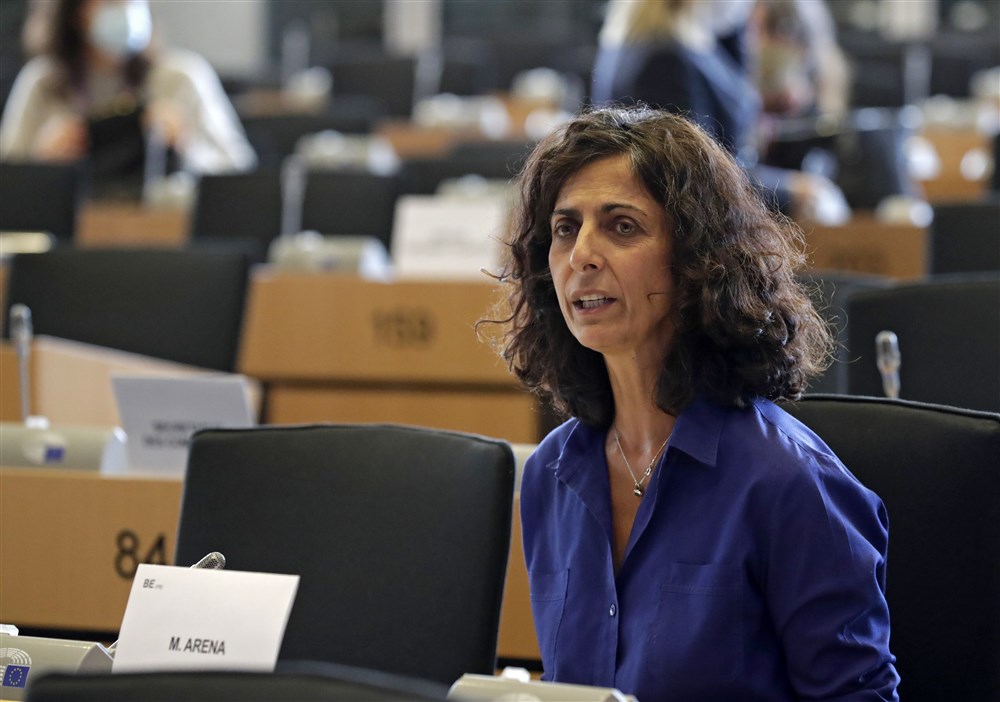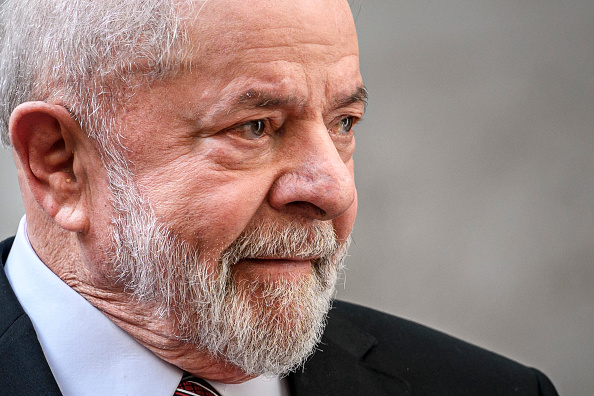There is no hiding the fact that across key Western nations the mood is darkening in relation to the Ukraine war.
Kyiv’s counter-offensive, which transfixed the world’s attention throughout most of this year, is now widely seen as a costly failure. When the Ukrainian army began its much-anticipated push back in June, this column warned of the “worst-case scenario” where Kyiv’s “ painstakingly-assembled strike force…is shattered against the Russian defences for little or no strategic gain.”
Unfortunately, the worst has come to pass. Despite huge losses – very likely, vastly under-estimated in official reports from Kyiv – the brave Ukrainian forces hardly even made it to Russia’s first main line of defence.
The Russians decided to defend forward and rely on constant counter-attacks rather than fall back as expected. This was also very costly to them, but General Gerasimov can more easily replace the gaps in his armies’ ranks than General Zaluzhny is able to on the Ukrainian side.
As Russia has also managed – again, against Western expectations – to maintain an adequate flow of war materiel to the front, the net result is that Moscow has now largely compensated for the mistakes of its 2022 campaign.
Meanwhile, Kyiv is on the backfoot. Fairly minor river crossings in Kherson aside, Ukraine is now hard pressed on the defensive at Avdiivka, an important bastion in the Donbas. President Zelensky and his top general have been as forthright as they can be in acknowledging the difficult situation at present and the dangers ahead.
The grim situation on the battlefield is combining with both political fatigue in the West and with the knock-on effects of the crisis in the Middle East, to create a vicious circle.
Increasingly, politicians in the US and Europe are holding up the war aid because the Ukrainians are not making progress; and the Ukrainians are not making progress because politicians are increasingly holding up the war aid. The US Congress is still blocking some $60 billion in military support for Kyiv, while the EU’s current €50 billion aid package is also in limbo for now.
But it is too early to jump to conclusions. If the West can ride out the current political wobble and keep Kyiv in the fight, there is every chance that the situation can be turned around, especially over the longer term.
Ukraine’s military difficulties are by no means terminal. In war things change. On current trends, Russia appears to be building an advantage going into 2024, but it needs to be building a much bigger – i.e. “decisive” – advantage in order to mount a major offensive of its own and overcome Ukrainian defences. That is a very tall order.
Against this backdrop, the great paradox is that the West appears to be losing its nerve just when some of the deeper defence-industrial trends that are fundamental to Ukraine’s war effort – and that have worked against it so far – are now starting to turn, particularly as regards ammunition production.
This is a rapidly-expanding success story but because it is unfolding in the background and its details are perhaps a bit more tedious, it is not getting the coverage it deserves – but it should.
From the summer of last year when Ukraine started to switch to NATO-standard 155mm calibre guns, the supply of artillery ammunition to Ukraine has become one of the key measures of Western support for Kyiv – precisely because artillery is so crucial in this war.
The battles in Ukraine have often been compared to those in the First World War, certainly for the similarities in the extensive use of trenches and the difficulties of achieving a breakthrough, but most especially for the very intense and constant use of artillery fire.
So what is the situation with Ukraine’s all-important 155mm ammunition supply?
The 155mm-calibre ordinance is widely used by the Armed Forces of Ukraine (AFU) which operates Western-donated barrel artillery, including American M777s, Polish Krabs, French Caesars and German PzH2000s.
Ukraine’s average 155mm ammunition consumption is around 6,000 shells per day, i.e. 180,000 per month or 2.1 million per year. This is Kyiv’s minimal overall artillery ammunition supply requirement.
During high-intensity operations such as during this summer’s counter-offensive, the AFU would fire up to 8-10,000 rounds a day, pushing the monthly consumption rate towards 250- to 270,000 rounds.
Europe and America are both having to expand 155mm production capacity from relatively low pre-war levels. When Russia invaded in February 2022, US production was around 180,000 shells per year (as much as Ukraine fires in one month), from two factories.
The pre-war aggregate annual output capacity from European 155mm manufacturers (15 companies across 11 countries) is less clear, with maximum estimates at over 450,000, split across: Germany (with Rheinmetall able to make some 100,000 shells per year), Sweden (Saab capacity: 100,000 yearly), Spain (estimated total capacity of around 150,000), Norway (Nammo, around 20,000), France (Nexter, around 15,000), Poland (PGZ, perhaps 30,000), the UK (approximately, 20,000), plus the Czech Republic (CSG and STV Group, with an ability to make tens of thousands of 155s).
These numbers only indicate the baseline industrial capacity going into the war; the actual pre-war production output will have been significantly below capacity in many cases.
After Putin’s attack on Ukraine, the problem of Western industrial mobilisation to meet Ukraine’s vital artillery ammunition requirements is essentially twofold: increasing production (i.e. new orders) within the existing manufacturing capacity; and, in addition, expanding that capacity further by building new production lines. For example Norway is now building a new factory, as is Rheinmetall but in Hungary.
Even before industrial mobilisation kicked off, the initial Western response, used as a quick stop-gap solution to Kyiv’s emergency needs, has been to supply the AFU from existing NATO 155mm stockpiles and also to buy whatever was available from other allies.
South Korea, for example, is rumoured to be “lending” up to 500,000 rounds to the US (effectively for Ukraine), while America itself has so far contributed more than 2 million 155mm rounds, largely from its own stockpiles.
Despite many practical problems, political squabbles and delays, NATO-wide 155mm shell production is already showing results. Rheinmetall’s output is expected to hit 450,000 rounds per year by the end of 2023, helped by its acquisition of one of Spain’s two main producers.
Saab will likely reach the 200,000 mark, the Czechs expect to hit 150,000 in 2023, Poland 40,000. Meanwhile, America’s rapid output growth is set to reach 360,000 155s made in 2023, while a new Rheinmetall factory in Australia will be turning out 100,000 of these rounds this year.
The pace and scale of defence industrial expansion differs, with the different companies and nations, while the two parameters of capacity and production also fluctuate with investment, contracts, the rest of the supply chain – especially for explosives and propellants – the workforce and other operational minutia that are involved in these activities.
The US Army, for example, is procuring parts and energetics from as far as India and Poland, as well as building new explosive production facilities at home.
But as these decisions and issues are being worked through and new manufacturing lines are being set up, the output starts to increase quite quickly.
Already the 2024 155mm shell production numbers are estimated to further rise from 450,000 to 600,000 for Rheinmetall (across its different plants), 10,000 to 80,000 for Nammo and from 15,000 to 36,000 for Nexter. In the US, 155mm production is expected to reach over 700,000 shells by the end of 2024.
In 2025, Saab alone will be able to make 400,000 of these rounds – about as much as the whole of Europe before Putin’s invasion – while the United States will be producing at least 1.2 million.
Together with the output from the rest of Europe and adding the expanded production at BAE in the UK, as well as Australian and perhaps Japanese factories, there is little doubt that Ukraine’s annual requirement of around 2 million 155mm artillery shells will be easily met by late 2024 and especially in 2025.
Yes the Allied effort to supply Ukraine and re-constitute the West’s own defences is moving much slower than it could, under more energetic leadership – and than the situation requires.
It often presents a sorry spectacle, particularly on the European side where the overly bureaucratic EU “rules” and petty politics and rivalries have made things needlessly difficult.
But even so, the numbers tell a powerful story about the West’s overall capacity to mobilise its resources. America, for example, is effectively in the process of increasing its production of artillery shells by 500 per cent within two years. The UK will also boost its 155mm shell production eight-fold by 2025.
There have been some concerns raised over the long-term sustainability of this industrial capacity production for artillery ammunition.
Companies are often said to be reluctant to invest in new manufacturing lines because of the uncertainty over future orders. They have to think about what happens when the war is over and the threat diminishes: who will buy their shells then, and how can they make good on the initial capital investment?
These arms manufacturers needn’t worry. Not only is the Ukraine war likely to carry on for quite a while longer, but the Russian threat will not go away. In fact, the expansion of Western militaries which has slowly started will also have to be matched by replenishing NATO ammunition stockpiles which have been depleted through supporting Ukraine.
Even by the most basic calculations, the official NATO requirement for 30-days of stockpiled ammunition just for the Alliance’s European artillery park of some 1,450 individual 155mm guns would total about 13 million rounds.
This level of demand should ensure the continued economic viability of a significantly expanded ammunition production capacity – unless European politicians take leave of their senses and refuse to restock and rebuild Allied defences even after what we’ve seen in Ukraine.
So, among all the doom and gloom regarding Ukraine’s military-political situation there is room for a bit more nuance with respect to some of the fundamental factors at play.
Defence-industrial mobilisation, and ammunition production in particular, is one of the most important – and on this count there are strong reasons for optimism going forward.
Whatever else the Ukrainian army will lack in 2024 and beyond, it will likely not be ammunition – or at least not for a lack of supply as has been the case this year and last. And over the next few years NATO stockpiles are also going to be replenished as well.
Undoubtedly the war is not going in Kyiv’s favour at the moment, but seizing on this particular snapshot in time – as politicians and others are often wont to do – and jumping to conclusions is short-sighted. Wars on this scale and of this nature, where the attacking side in any operation is at a major disadvantage, are usually a hard, long slog.
In our just-in-time and instant-gratification culture we are ill-prepared to get the right measure of the kind of events and dynamics that are unfolding in the Ukraine conflict. A bit more patience and staying power is required.
In the end, the ongoing story of ammunition production capacity expansion in the West is a reminder of the huge military-industrial potential that we can still mobilise to confront our adversaries.
It takes time – and much discussion and drama – to do so, but once the wheels are put in motion the results can be crushing at least in material terms. The Western alliance still holds powerful cards in this game – now it’s up to our leaders to play them.
Gabriel Elefteriu is deputy director at the Council on Geostrategy in London and a fellow at the Yorktown Institute in Washington, D.C.






Europe’s capital needs media to challenge the status quo: That’s why Brussels Signal is launching